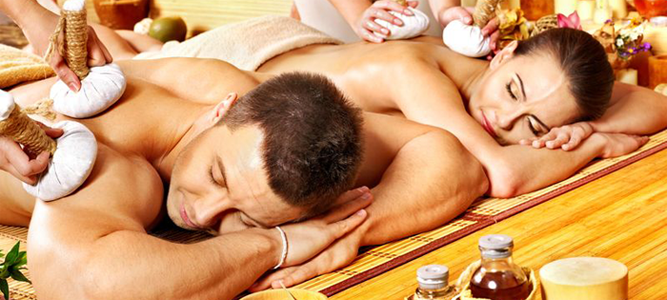Thai Massage: An Introduction

Have you ever had a Thai massage? Were you surprised when the massage therapist used their elbows or knees? For those who have visited Thailand, you’re probably already familiar with the Thai massage offered on almost every corner. This article will introduce you to the basic principles of Thai massage.
Throughout the years, Thai massage has become a popular treatment in virtually every spa around the world. It is important to mention that the origins of the massage’s technique received a great deal of influence from both Ayurvedic and traditional Chinese medicine. Due to its strategic location between India and China, Thailand witnessed a continuous flow of people, ideas and traditional medicine from both countries and was shaped in many ways by each of them.
Thai massage works on the meridian (energy) lines within the body, known in Asian culture as “sens”. When you become ill, the flow of energy around the body has become blocked or is not moving as freely as it should. When you have a Thai massage, it encourages the flow of energy, bringing harmony and balance to the body.
Throughout a Thai massage, the therapist will start with meridian work. This means palm and thumb presses along the energy lines, which warm the muscles and increase blood flow. Working around the joints, releasing tension and encouraging movement occurs before stretching of the limbs. Through working on the meridian lines and joints, it warms up the body physically and emotionally enabling maximum benefit from the stretching
The biggest difference between Thai massage and other types of massage is that the Thai method uses pressure points, muscle stretching and compression in a rhythmic motion. When doing a Thai massage, therapists use their hands, feet, elbows, forearms and knees. It is performed on a comfortable mat on the floor using no oils, as it is done on top of clothes.
Benefits of regular Thai massage include relief from constipation, IBS, headaches, sciatica, back and neck pain. Almost all feel relaxed, refreshed and much more flexible afterwards, and those who have regular Thai massage come to enjoy the deep pressure techniques and spectacular manipulations.
You should not suffer pain or extreme discomfort when receiving Thai massage. Loose-fitting clothing is encouraged. Inform your therapist of any health conditions or concerns prior to treatment. Throughout the session, communicate if the level of pressure is too soft or too strong; it should never be painful. If you feel discomfort during traditional Thai massage, opt for a more gentle treatment like Thai Aroma Massage. This type of massage involves warm herbal compresses that slowly release the strain of the daily grind, revitalizing your energy and leaving you feeling totally at ease and peaceful.
Thai massage has been practiced for over 2500 years to heal, relax and refresh. Enjoy this holistic approach to massage, deep pressing and stretching the physical and energetic body. A powerful form of integrative bodywork, experience the many benefits of Thai massage.
Please visit the Educational Corner for our collection of current and past educational articles. The archive includes five categories: Health & Wellness, Massage & Bodywork, Product, Home Massage and Business. From massage research, product spotlights and detailed techniques to DIY self-care and business tips, browse our varied list and learn more.
We offer monthly newsletters to our valued customers. Each issue features new products, exciting releases, the latest news, educational articles and special exclusive offers. It’s easy and FREE. Please sign up here.






